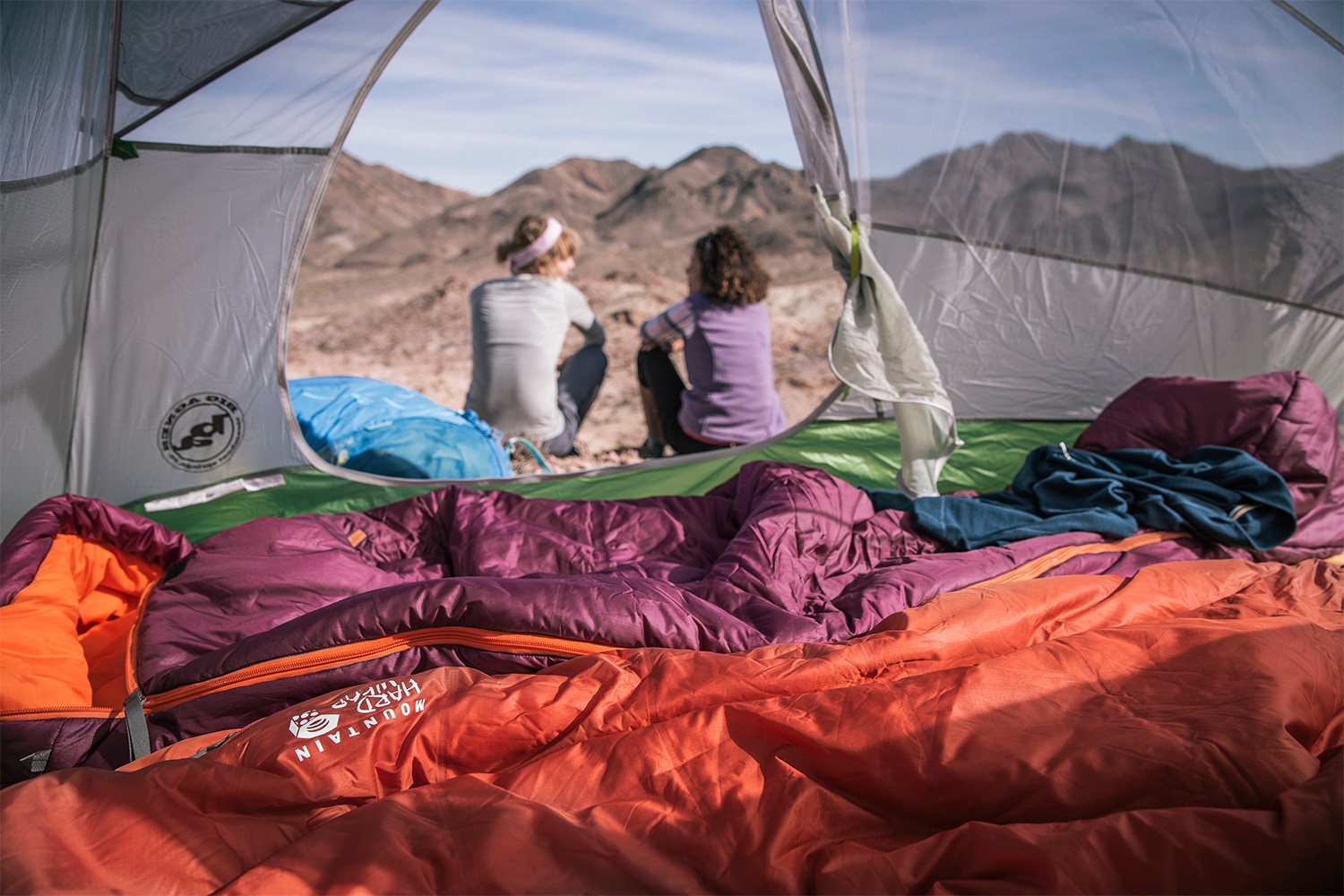Last time on Girl Talk, we discussed tips and tricks for how to pee in the backcountry. Now, by popular demand, please find our outdoor women’s guide for handling everyone’s favorite time of the month: your period.
Should you use tampons or a menstrual cup?
In town, tampons and pads are convenient—you just use them once and toss them. In the backcountry, it’s not so simple. You can’t just discard feminine products after use. That’s where a reusable, flexible cup comes in. They’re usually made of silicone or natural rubber and you can use for one for your entire trip and beyond. Some popular brands are DivaCup, Softcup, Lily Cup, The Keepers and Moon Cup.
Some women strongly prefer tampons over menstrual cups, and there’s nothing wrong with that—just be sure to bring enough tampons to last for your trip. You can store tampons before and after use in an opaque plastic bag for privacy. Make sure to have one bag for clean tampons and another well-marked waste bag for used ones. Before leaving home, you can make your own waste/biohazard bag by completely covering a zip-top plastic bag with duct tape and marking it with a skull and crossbones.
If you use tampons, be sure to maintain odor control.
If you do prefer tampons, you’ll need to pack out used ones. Bring the kind without applicators for less waste to pack out. Store used ones inside your duct-taped waste bag (see above), and add dry tea bags or crumbled aspirin to control the scent. If you’re in bear country or in another area with wildlife issues, you’ll need to place this bag in the container holding your food and other scented items overnight so that you don’t have odors drawing wildlife toward your tent.
How to use a menstrual cup.
This reusable cup captures your menstrual flow, which means you need to insert it and later remove it to empty out its contents. You can usually wear a cup for up to 12 hours straight without emptying it.
Before inserting or removing the cup, be sure to wash your hands with hand sanitizer or soap and water. Empty the contents of the cup and bury it just like you would any other human waste in a cat hole, which you should dig six to eight inches deep and 200 feet away from any water sources. If you’re on a glacier or in a sensitive area where you need to use bags for human waste, instead of digging a cat hole, empty the contents of the cup into the waste bag. Then re-insert the cup and wash your hands again.
To clean your cup during the trip, wash it with warm water and soap if you can. If not, wipe it down with toilet paper and be sure to pack the toilet paper out. Do not use hand sanitizer to clean the cup because that can slowly degrade the silicone. The cup needs to be stored in something breathable, so once your cycle is over you can keep it in the cotton pouch that comes with many cups or in another cotton or paper bag.
Chances are, even with the very best hygiene, you can’t keep your cup as perfectly clean as you do at home. So, once you’re back from your trip, be sure to give your cup another thorough cleaning with warm water and unscented, water-based soap.
Cleanliness keeps you going strong.
Above all, while you’re out on the trail take care of yourself and stay clean. Store your cup or tampons and pads properly and wash your hands frequently. If you prefer, use sanitary wipes to help keep yourself clean—just be sure to carry those out with your used supplies. Once you reach civilization, dispose of your used sanitary items properly (if it’s the garbage bin at the trailhead, make sure it’s bear proof). By keeping an eye on cleanliness you’ll help avoid vaginal and urinary tract infections.
Follow these simple steps above and you’ll be good to go out on the trail!
